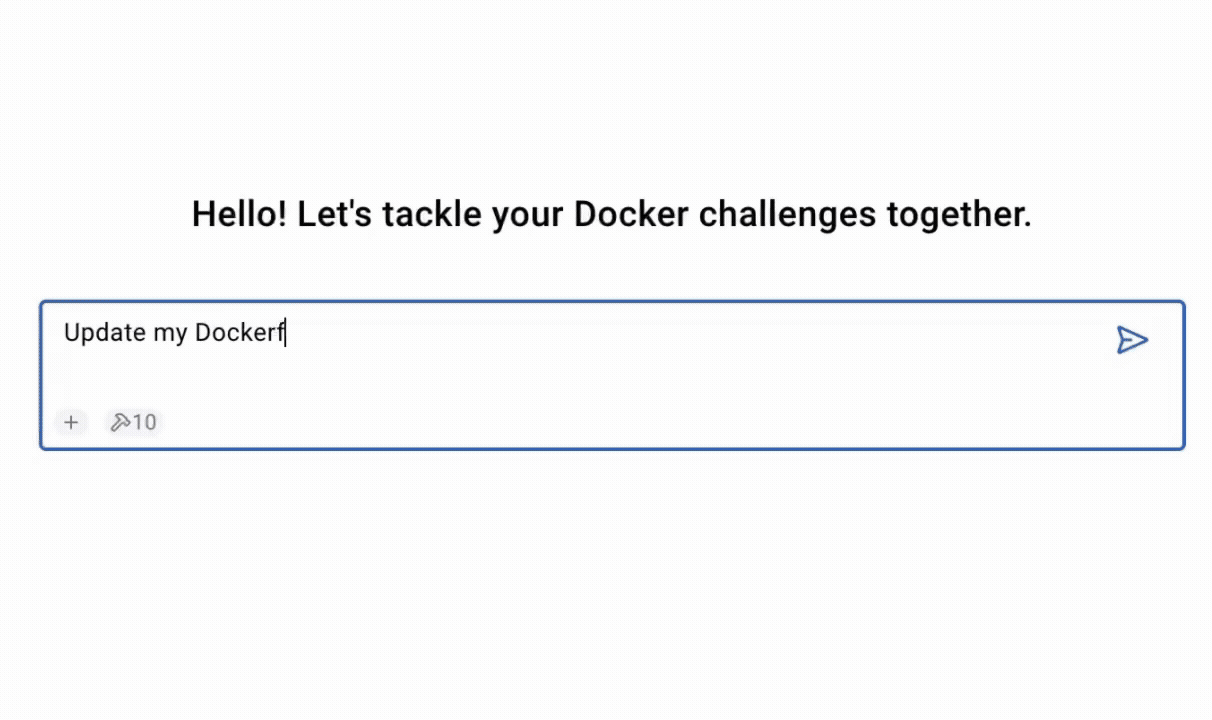We launched Docker Hardened Images (DHI) in May, and in just two and a half months, adoption has accelerated rapidly across industries. From nimble startups to global enterprises, organizations are turning to DHI to achieve near-zero CVEs, shrink their attack surface, and harden their software supply chain, all without slowing down developers.
In a short time, DHI has become the trusted foundation for production workloads: minimal, signed, continuously patched, and built from the ground up to deliver security at scale. Platform and security teams alike are moving faster and more securely than ever before.
That momentum is why we’re doubling down. We’re expanding Docker Hardened Images with powerful new capabilities: a broader image catalog, flexible customization options, AI migration agent, FedRAMP-ready variants, and tighter integrations with the tools teams already use every day. Many of these enhancements will be in action at Black Hat 2025.
Secure Images for End-to-End Workloads
One of the most consistent things we hear from customers, especially those in security-conscious environments, is that they’re not just running a few basic containers. They’re deploying full-stack systems that span everything from message queues like RabbitMQ and Redis, to web servers like Tomcat and NGINX, databases and storage tools such as PostgreSQL and Prometheus, and developer tools like Azure Functions and Grafana. They also rely on networking components like Envoy, monitoring and observability stacks like Grafana, Loki, and Netdata, and even ML and AI infrastructure like Kubeflow.
To support these real-world workloads, the Docker Hardened Images (DHI) catalog now includes trusted, production-ready images across all these categories. Every image is SLSA-compliant, signed, and continuously maintained, giving security teams confidence that they’re using secure, verifiable containers without slowing down developers or complicating compliance.
And now, getting started with DHI is even easier. Docker’s AI assistant can automatically analyze your existing containers and recommend or apply equivalent hardened images, streamlining your move from community or internal images. Watch it in action below.

DHI Customization: Flexibility without the risk
Another piece of feedback we’ve heard from customers is how much they appreciate the flexibility of DHI. DHI meets teams where they are, allowing them to customize based on their unique needs rather than forcing them to adapt to rigid constraints. The ability to tailor images while still relying on a hardened, security-first foundation has been a clear win. And now, we’ve taken that experience even further.
With our new self-serve UI, customizing DHI is faster and simpler than ever. You can inject internal certificates, install trusted packages, tweak runtime settings, and define user policies, all without forking base images or wrangling complex workarounds.
Need to configure runtimes, install essential tools like curl, git, or debugging utilities? Want to add custom CA certificates for internal trust chains, set environment variables, or define custom users and groups? With DHI, you can do it all in just a few clicks.
Best of all, your custom images stay secure automatically. Customizations are packaged as OCI artifacts: secure, versioned layers that cleanly separate your logic from the base image. Docker handles the final image build, signs it while maintaining a SLSA Build Level 3 standard, and ensures the image is always up to date.
When the base image receives a security patch or your own artifacts are updated, Docker automatically rebuilds your customized images in the background. No manual work. No surprise drift. Just continuous compliance and protection by default. Customers can create as many customizations as they need for each repository, without any additional cost.
This is a huge win for platform and security teams. There’s no need to fork base images, write custom CI rebuild scripts, or maintain parallel image pipelines just to meet security or policy requirements. You get the flexibility you need without the operational overhead.
FedRAMP-Ready: Built for compliance from the start
If you’re chasing FedRAMP authorization, meeting strict security standards like FIPS and STIG isn’t optional, it’s mission-critical. But hardening container images manually? That’s wasted time, human error, and endless maintenance.
Docker Hardened Images now ship with FedRAMP-ready variants, engineered to align out of the box with U.S. federal security requirements. These images are FIPS-enabled for strong, validated cryptographic enforcement, STIG-ready with secure defaults baked in, and delivered with signed SBOMs and attestations for full auditability.
All of this is built and maintained by Docker so your team doesn’t have to be in the business of compliance engineering. Just plug these images into your pipeline and go. Under the hood, Docker’s FIPS-enabled images leverage validated cryptographic modules such as OpenSSL, Bouncy Castle, and Go. Each image includes signed attestations linked to NIST certifications and test results, ensuring transparency and traceability across the software supply chain.
Every STIG-ready image is scanned via OpenSCAP during secure builds and comes with signed results, including compliance scores and full scan outputs (HTML and XCCDF). Each result is clearly mapped to NIST 800-53 controls, making it easier for security teams and auditors to assess and track compliance. As you customize these images, Docker helps you track compliance over time, making it easier for security teams and auditors alike.
Learn how Docker is simplifying FedRAMP readiness in this deep-dive blog post
Docker + Wiz: Smarter Vulnerability Management
Docker Hardened Images integrate seamlessly into your existing developer and security workflows, working out of the box with popular tools like GitLab, Sonatype, CloudSmith, Docker Hub, Docker Desktop, GitHub Actions, Jenkins, and more.
Now, we’re taking it a step further: Docker Hardened Images integrate with Wiz, empowering security teams with deeper, context-rich visibility into real risk based on what’s running in production, what’s exposed to the internet, and what interacts with sensitive data.
“Docker’s Hardened Images offer an exceptionally secure foundation with significantly smaller surface areas and near-zero CVEs”, said Oron Noah, VP of Product, Extensibility & Partnerships at Wiz. “The integration between Docker and Wiz empowers DevSecOps teams to operationalize these trusted foundations with complete visibility into container image technologies and precise vulnerability reporting. Rich OpenVEX documents and OSV advisories provided by Docker add context to vulnerabilities reported in Wiz, enabling teams to prioritize the vulnerabilities that matter and remediate faster without slowing down innovation. This integration gives platform and security teams both a secure foundation and a platform to monitor and manage the full container security lifecycle from code to runtime.”
Putting DHI to the Test: Independent Security Assessment
To validate the security posture of Docker Hardened Images, we partnered with Security Research Labs (SRLabs), a leading cybersecurity firm, to conduct an independent assessment. Their review included threat modeling, architectural analysis, and grey-box testing using publicly available artifacts, simulating realistic attack scenarios.
The results reaffirmed our approach. SRLabs verified that all sampled Docker Hardened Images are cryptographically signed, rootless by default, and ship with both SBOM and VEX metadata, a critical combination for modern software supply chain security.
Importantly, no root escapes or high-severity breakouts were found during the assessment period. SRLabs also validated Docker’s claim of removing common shells and package managers, significantly reducing the attack surface up to 95% smaller than standard images. 7-day patch SLA and build-to-sign pipeline were identified as a strength compared to typical community images. The review also acknowledged areas for improvement such as key revocation and build determinism which are already being actively addressed.
Read more about the SRLabs report here.
The Future of Hardened Containers Starts Here
Docker Hardened Images are becoming the trusted foundation for building and running secure apps at scale. With a broad catalog, easy customization, FedRAMP-ready variants, and integrations like Wiz, DHI meets teams where they are. Best of all, customization, FIPS, and STIGs are included at no extra cost, simplifying compliance without compromise.
If you’re attending Black Hat 2025, we’d love to connect. Please come visit Docker at Booth #5315 to explore how we’re redefining software supply chain security. And don’t miss our session, “Achieving End-to-End Software Supply Chain Security”, happening on Wednesday, August 6 from 12:05 to 1:30 PM in Lagoon CD, Level 2. We’ll be diving deep into real-world strategies for implementing hardened, traceable, and continuously compliant software delivery pipelines.




